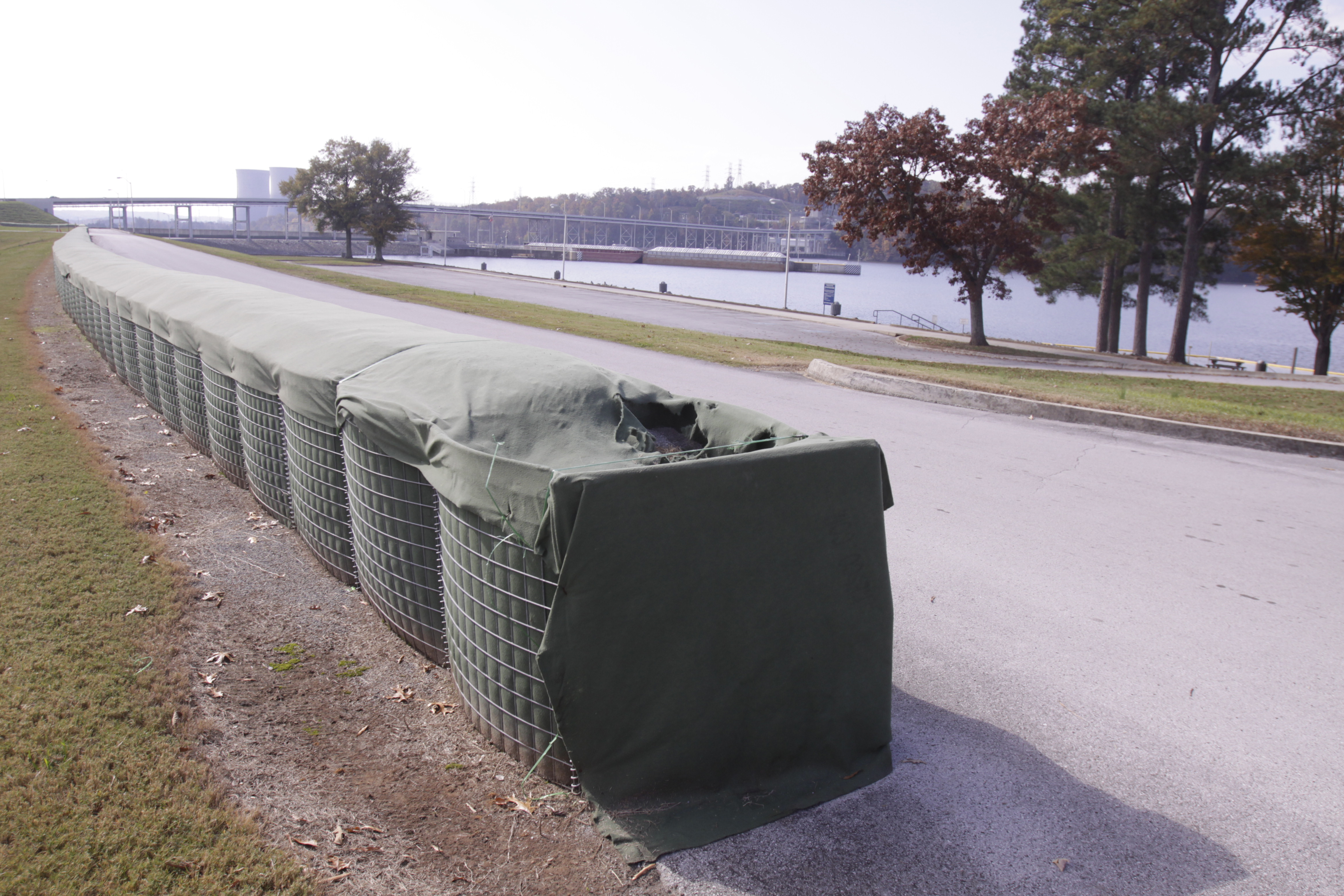 The Tennessee Valley Authority has erected a retaining wall on the Northeast side of the Tennessee River, near Watts Bar Dam and Watts Bar Nuclear Plant outside Spring City, Tenn. Faulty figures discovered during new calculations with better technology have TVA and the Nuclear Regulator Commission looking at TVA's new flood preparations for Watts Bar and Sequoyah nuclear plants.
The Tennessee Valley Authority has erected a retaining wall on the Northeast side of the Tennessee River, near Watts Bar Dam and Watts Bar Nuclear Plant outside Spring City, Tenn. Faulty figures discovered during new calculations with better technology have TVA and the Nuclear Regulator Commission looking at TVA's new flood preparations for Watts Bar and Sequoyah nuclear plants.ATLANTA -- Officials with the Nuclear Regulatory Commission are asking TVA for more information on the utility's plan to keep floodwaters from disabling either Sequoyah or Watts Bar nuclear plants.
In a meeting Monday between the Tennessee Valley Authority and the NRC, an NRC project manager asked TVA executives why the Watts Bar plant should be allowed to continue operating.
Fred Lyon, who works in the NRC's headquarters Office of Nuclear Reactor Regulation in Rockville, Md., said the temporary dam heightening modifications -- a series of sand and crushed stone baskets -- are incomplete.
The baskets have gaps between them where roads pass through, TVA officials acknowledged.
TVA Vice President Don Jernigan said the utility has a 27-hour-margin plan, should weather forecasts indicate a catastrophic flood is a possibility. In that event, Jernigan said, workers would put in more barriers to seal those gaps.
The baskets are a temporary fix, but TVA also is working on a plan to make the basket modifications at four East Tennessee dams and all of TVA's nuclear plants more permanent.
Those dams are Fort Loudon, Tellico, Cherokee and Watts Bar -- all upstream of Chattanooga.
"We have elevated this [new preparation] to a fleet approach to be sure it gets the right treatment and urgency," Jernigan told the NRC inspectors and officials.
Second meeting
NRC and TVA have scheduled a second meeting on Dec. 13 to discuss how TVA will prepare for what the nuclear industry refers to as the "probable maximum flood" -- a hypothetical flood that would surpass any known local weather occurrence.
The need for both the temporary and more permanent flood planning began when TVA officials, in looking to resume construction at Bellefonte Nuclear Plant near Scottsboro, Ala., realized the assumptions they used to model potential flood problems three and four decades ago were both erroneous and outdated.
When they applied correct figures and new technology to their calculations, they realized a catastrophic flood would raise water much higher than they thought.
New calculations show flooding would rise more than 4 feet higher than Watts Bar was licensed and designed to handle.
Such a flood would raise water nearly two and a half feet higher at Sequoyah than that plant was designed and licensed to handle.
Those levels also would put critical reactor control equipment at both plants under water.
Jernigan and officials from both plants told NRC that modifications already are being made -- inside the plants, as well as along the sides of the four dams being modified.
Watts Bar and Sequoyah officials told NRC officials that other emergency flood-mode preparations also are being made, such as sealing conduits, doors.
Jernigan said TVA officials will get back to NRC about when in that 27-hour period the gaps in the sand and stone baskets would be filled.
He said TVA has two timelines in that period: 10 hours is one deadline for some actions and 27 hours -- or less -- is the second deadline.
Barge strike
Another question Jernigan said TVA will answer for NRC in the second meeting is whether a loose barge striking the sand and stone baskets could disable the makeshift dams.
"Our analysis shows [the barriers] would hold," Jernigan said.
TVA documents presented at the meeting show the probable maximum flood levels could occur with a series of rains over about nine days.
In TVA's estimate, an average of more than 6 inches of rain could fall in one three-day period over the East Tennessee watershed basin of more than 20,000 square miles, then in the next six days an additional 16-17 inches falling on the already saturated area could bring on an unthinkable flood.
Victor McCree, NRC's regional director, said both NRC and TVA already were looking at concerns about catastrophic flooding at TVA and all the nation's nuclear plants beginning about 2009.
He said the earthquake and tsunami that swamped stand-by diesel generators and led to three reactor meltdowns in Fukushima, Japan, helped prioritize the effort, as did flooding in Nebraska last year that surrounded Fort Calhoun Nuclear Plant.
Contact staff writer Pam Sohn at 423-757-6346 or psohn@timesfreepress.com.